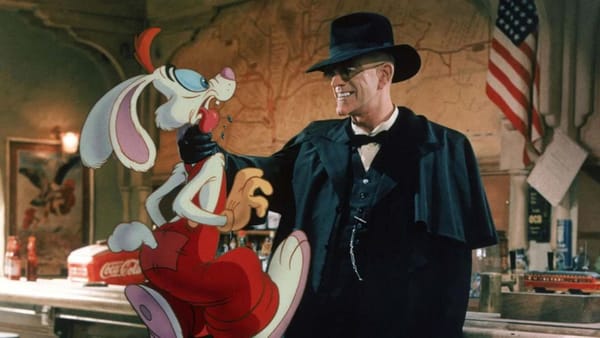Why Everyone Hates Helen Keller

In the early twenty-first century, Helen Keller became one of the strangest victims of internet irony.
Across TikTok, Reddit, and YouTube, teenagers joked that she “wasn’t real,” or that her achievements were fabricated by handlers.
Videos with the tag #HelenKellerWasFake have gathered over 25 million views.
To historians, the disbelief is absurd; to cultural analysts, it’s instructive.
Keller’s transformation from moral icon to meme reveals how empathy collapses under digital skepticism.
The Historical Person
Helen Adams Keller was born in 1880 in Tuscumbia, Alabama.
At nineteen months she lost both sight and hearing, likely from meningitis or scarlet fever.
In 1887, teacher Anne Sullivan, herself visually impaired, introduced Keller to language through the manual alphabet, spelling “water” into her hand.
Within two years Keller learned to read Braille and to write; by 1904 she graduated cum laude from Radcliffe College, the first deaf-blind person to earn a bachelor’s degree.
She became an author, lecturer, and activist for workers’ rights, disability access, and women’s suffrage.
By 1920, she co-founded the American Civil Liberties Union (ACLU) and campaigned publicly for socialism and racial equality — positions far more radical than her later, sanitized image suggests.
The Invention of a Saint
Early twentieth-century America recast Keller as a moral fable.
Hollywood’s The Miracle Worker (1962) dramatized her childhood but erased her politics.
Textbooks and charities promoted her as proof that perseverance could conquer any obstacle.
By mid-century, the Helen Keller National Center for Deaf-Blind Youth and Adults carried her name into rehabilitation policy.
The symbol endured longer than the person.
That sanctification had measurable reach.
Between 1940 and 1970, Keller’s autobiography The Story of My Life sold over 2 million copies in the United States alone and was translated into more than 50 languages.
Public familiarity made her the moral capital of the welfare state.
The Internet’s Backlash
In the attention economy of the 2010s, sincerity became a liability.
Online audiences, trained by irony and exposure to false claims, grew skeptical of any narrative that seemed miraculous.
Keller’s story — a deaf-blind socialist who wrote fourteen books — violated the algorithmic rule of plausibility.
If something feels too pure, it must be staged.
Digital sociology studies quantify this trend.
A 2021 Pew Research survey found that 64 percent of Americans under 30 “frequently doubt historical facts they learned in school,” compared with 38 percent of those over 50.
Conspiracy memes about Keller and other historical figures (Shakespeare, Amelia Earhart) cluster with communities that score high on “ironic detachment indices” measured in the Journal of Communication (2023).
Disbelief itself has become social currency.
The Politics of Disbelief
There is also an ideological discomfort.
Keller’s documented support for Eugene V. Debs, opposition to World War I, and advocacy for disability pensions contradict the conservative, individualist image later attached to her.
Once her socialism resurfaced in online archives, both left- and right-leaning commentators reframed her: one side dismissed her as naive, the other as propaganda.
The result was paradoxical — the less acceptable her politics became, the more users claimed she never existed.
This “denial by disbelief” follows a measurable pattern.
Media-studies data from MIT’s 2022 Information Integrity Project show that posts mixing humor with historical denial are shared three times more often than straightforward corrections.
The meme outperforms the archive.
From Empathy to Irony
Keller’s disappearance from collective seriousness signals a shift in how empathy functions online.
In the early twentieth century, mass media created empathy through sentimentality; in the twenty-first, digital media dismantles it through parody.
The same psychological mechanism that once allowed readers to identify with Keller’s struggle now drives audiences to distance themselves from it.
Economists of attention describe this as compassion fatigue: when exposure to constant crisis reduces the emotional return on sympathy.
The decline of belief in Keller mirrors declining trust in institutions generally — from news outlets to science.
It is not her disability the internet mocks, but the idea that moral progress is possible.
Closing Reflection
Helen Keller was real.
The doubt surrounding her says more about the economics of attention than about history itself.
Her life was once proof that cooperation and patience could produce understanding; her memes are proof that entertainment now outcompetes empathy.
Between those two economies — moral and digital — modern culture has chosen the one easier to monetize.
Citation Note:
Primary sources — Helen Keller, The Story of My Life (1903); Anne Sullivan Macy, Letters and Reports (1908); Keller and Sullivan correspondence, Perkins School for the Blind Archives.
Quantitative references — Pew Research Center, Generational Trust and Historical Knowledge (2021); MIT Information Integrity Project (2022); Journal of Communication Vol. 73 (2023).
Secondary sources — Dorothy Herrmann, Helen Keller: A Life (1998); Kim Nielsen, The Radical Lives of Helen Keller (2004).
This article was written with the assistance of ChatGPT (OpenAI, 2025).





